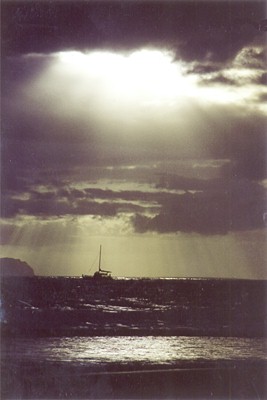All Nonfiction
- Bullying
- Books
- Academic
- Author Interviews
- Celebrity interviews
- College Articles
- College Essays
- Educator of the Year
- Heroes
- Interviews
- Memoir
- Personal Experience
- Sports
- Travel & Culture
All Opinions
- Bullying
- Current Events / Politics
- Discrimination
- Drugs / Alcohol / Smoking
- Entertainment / Celebrities
- Environment
- Love / Relationships
- Movies / Music / TV
- Pop Culture / Trends
- School / College
- Social Issues / Civics
- Spirituality / Religion
- Sports / Hobbies
All Hot Topics
- Bullying
- Community Service
- Environment
- Health
- Letters to the Editor
- Pride & Prejudice
- What Matters
- Back
Summer Guide
- Program Links
- Program Reviews
- Back
College Guide
- College Links
- College Reviews
- College Essays
- College Articles
- Back
Eyes of the Mind
Eyes of the Mind
The hues of a cream-orange skyline;
A city of industry
The paradisiacal greens of water;
A lake of algae
Exotic reds of African soils;
A country of genocide
White milk of cloud like purities;
A corporation of corruption
The warmth on a face in the snow;
A hole in the—sky—line of lights;
Broken
By planes
A million paradoxes that exist
30 million more eyes that are
Analysis
Considering the form of the poem, one can see that every semi-colon indicates a negative perspective to a positive image that precedes it. The first two stanzas mirror each other with “the”, which starts each stanza. Each second line in the first four stanzas offer a different perspective and emulate each others sound with the repetition of “A ___ of”. The stanzas and their juxtaposition of images further the idea of perception and how phenomena can often be seen in a cynical sense, just as much as they are seen as beauty. This model is clearly modeled after Stevens as it allows the mind of the reader to see what it wants to see and make whatever it will of the images presented to it through the lines. Furthermore, the 5th and 6th stanzas work in conjunction to test the reader’s perspective and allow them to see more than one image, depending on what kind of thinker they are. The last stanza of the poem furthers the idea that there are many perceptions in the world and that for every paradox that exists there are millions of different ways different people can interoperate them. Finally, imagery is a very large part of the poem as it allows the readers creative mind to take control and identify various scenes as their minds wish. Without the reader’s imagination and interpretations of the lines presented to them, the true meaning of the poem could not be adequately conveyed.
(As a post-note to the analysis, social critiques of current issues in our world today are found in the 3rd, 4th, and 5th stanzas, and a reference to Wallace Steven’s poem “A Sea Surface Full of Clouds” is made in the second stanza).

Similar Articles
JOIN THE DISCUSSION
This article has 0 comments.
